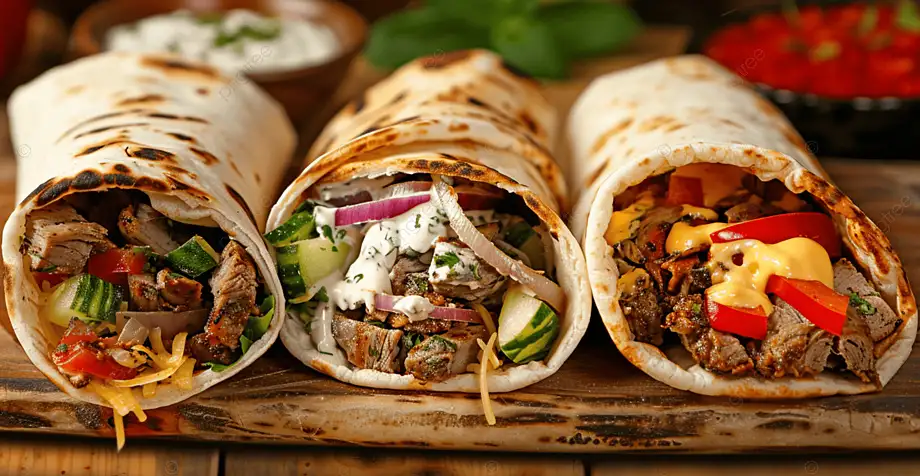Introduction: The Rotisserie Legacy
Have you ever stood in line at a food stall, mesmerized by the sizzling meat on a rotating spit, wondering, “What makes Doner Kebab different from Shawarma?” This question taps into a common culinary confusion, leaving many unsure about their choice. As these dishes share historical roots, their unique flavors and cultural significance often blur together, adding to the dilemma. But worry no more—this guide will unravel the distinct characteristics of Doner and Shawarma, giving you the confidence to savor each with appreciation for their rich heritage.
Historical Roots
The journey of Doner and Shawarma begins in the 1700s Ottoman Empire, where spiced lamb was stacked on a horizontal spit, slowly roasted for even cooking and intense flavors. In Turkey, this evolved into the Döner Kebap, a vertical spit-cooked masterpiece. As the Ottoman Empire expanded, this technique spread across regions, giving rise to Shawarma in the Middle East. Each region adapted the method to local tastes and ingredients, creating variations that remain popular to this day.
Continue your Mediterranean culinary journey with our guide to making authentic Roman-style chicken.
Key Differences Between Doner and Shawarma
While Doner and Shawarma share origins, their distinctions lie in preparation, spices, and serving styles, reflecting the unique culinary traditions of their regions:
- Marination and Spices:
- Doner Kebab: Characterized by a simpler spice mix, often including cumin, clove, and cinnamon, highlighting the natural flavors of the meat.
- Shawarma: Typically marinated in a rich blend of spices like turmeric, cardamom, and cinnamon, delivering a bolder flavor profile.
- Meat Choices:
- Turkey’s Doner: Traditionally lamb, but beef and chicken are common.
- Middle Eastern Shawarma: Lamb is preferred, though mutton, chicken, turkey, and even beef are used.
- Serving Style:
- Doner: Often served on pide bread or lepinja, accompanied by rice or salad.
- Shawarma: Typically wrapped in pita bread with tahini, pickles, and vegetables.
- Accompaniments:
- Doner: Features sauces like chili or yogurt-based mixes.
- Shawarma: Accompanied by tahini or garlic sauce, with toppings like pickled turnips and tabbouleh.
Regional Variations and Innovations
As these dishes traveled globally, they adapted to local cuisines:
- Germany’s Berlin Doner: Uses fresh bread, three distinct sauces (spicy chili, yogurt, garlic herb), and pickled red cabbage, creating a uniquely vibrant flavor.
- Greek Gyros: A cousin of Doner, gyros often use pork or chicken, served with tzatziki sauce in pita bread.
- American Shawarma: Incorporates local ingredients like lettuce and tomato, catering to Western palates.
The Cultural Significance
Both Doner and Shawarma are more than just street food; they embody centuries of tradition and community. In Turkey and the Middle East, these dishes are integral to celebrations, family meals, and daily life. They represent hospitality and the enduring legacy of Ottoman culinary influence.
Culinary Tips for Enjoying Doner and Shawarma
- Choose Fresh Ingredients: Authenticity begins with high-quality meat and bread.
- Experiment with Sauces: Combine spicy, creamy, and tangy flavors for a balanced taste.
- DIY Rotisserie: Invest in a rotisserie setup to replicate the authentic cooking method at home.
Conclusion: A Shared Culinary Heritage
Doner and Shawarma, rooted in shared traditions, showcase the rich diversity of Mediterranean and Middle Eastern cuisines. As these dishes continue to evolve, they remind us of the power of food to transcend cultural boundaries, bringing people together over flavors that tell stories of history, innovation, and global unity.

